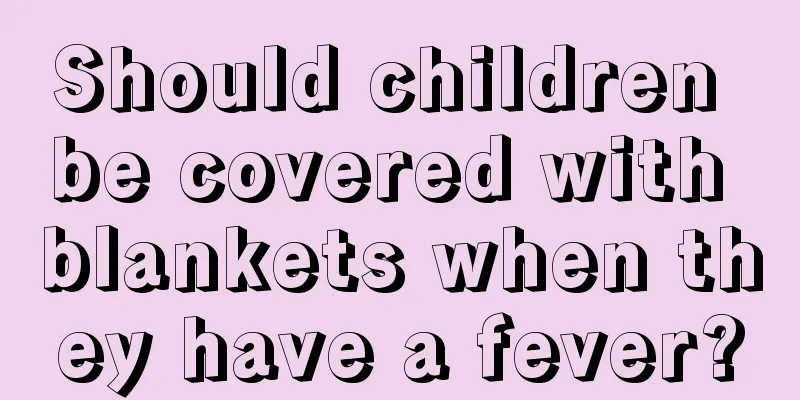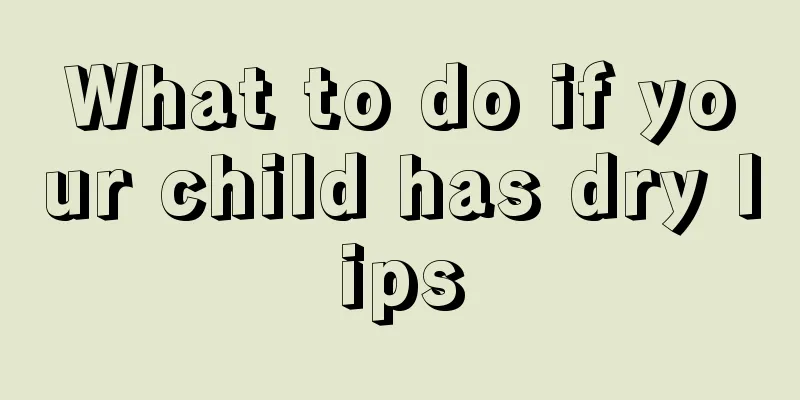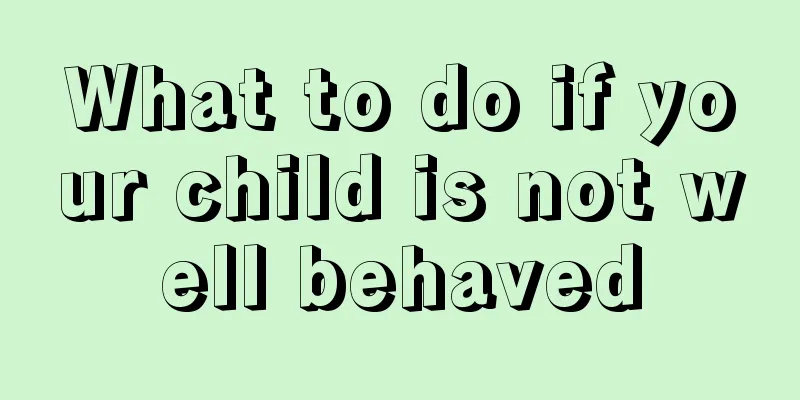Should children be covered with blankets when they have a fever?

|
Fever is a normal reaction of our body. It often occurs when we have a cold, and the virus is expelled through fever. Although sometimes a fever that is too high is dangerous, it can be brought down quickly with proper care. Some people think that when you have a fever you should cover yourself with a blanket so that you can get better faster. So, if a child has a fever, should he be covered with a blanket? Knowing how to properly manage a child's fever at home can reduce unnecessary visits to the pediatrician or the emergency room. Fever management strategies at home, such as covering a feverish baby with a sheet or blanket, play a key role in controlling the body's temperature, as long as you don't do it too exaggeratedly. The key to providing proper care for a child with a high fever is to keep the child comfortable and ensure that the temperature does not get out of control. Encourage your baby to lie on the couch or bed and cover him with a medium or light blanket or sheet. Dress your child in only a single layer of lightweight clothing, such as pajamas, beneath a blanket or sheet. Generally speaking, avoid using blankets that are too heavy or layering them together. Doing so may cause your child to overheat, which may increase his discomfort. Combined with the tucking technique, fluids play a vital role in making a feverish child less uncomfortable. Encourage your child to drink plenty of fluids to prevent dehydration. You may also consider giving your child a warm bath to help cool his or her body temperature down. If your child doesn't want to stay in the tub, you can gently wipe his face, chest, back, and legs with a damp washcloth. To prevent chills, you can cover your child with a light sheet or blanket. Helps lower your baby's body temperature The body temperature center of infants and young children is not yet fully developed. If they encounter respiratory infections, allergies, vaccination reactions, etc., their body temperature will rise, but they should not use medications indiscriminately. So when the baby has a fever or a high fever that does not subside, what measures should the mother take to help the baby lower his body temperature? 1. 35% alcohol bath Alcohol can dilate blood vessels and take away a lot of heat when it evaporates, which can help cool down infants and young children when they have a fever. Prepare 100 ml of 75% alcohol, add an equal amount of warm water, and keep the temperature at around 27-37 degrees Celsius. Do not let it be too cold, otherwise it will cause muscle contraction, causing the temperature to rise again. When doing alcohol bath, use a small towel to start wiping the baby's neck, then wipe from top to bottom in a patting manner. The armpits, groin, and areas with large arteries and blood vessels on the surface of the body should be wiped until the skin turns slightly red, which will help reduce the temperature. Be careful not to rub the baby's chest, abdomen, and soles of the feet to avoid causing adverse reactions. 2. Take a warm bath Taking a bath can help dissipate heat. If your baby is in good spirits when he has a fever, you can give him more baths and adjust the water temperature between 27 and 37 degrees Celsius. Be careful not to give your baby a hot bath, otherwise it will easily cause vasodilation throughout the body, increase oxygen consumption, easily lead to ischemia and hypoxia, and aggravate the condition. 3. Soak your feet in hot water Soaking your feet can promote blood circulation and relieve discomfort. Another benefit of soaking your baby's feet when he has a fever is that it can help reduce the temperature. You can use a large basin or a small bucket for foot soaking. Pour 2/3 of the basin with water. The water temperature should be slightly higher than usual, around 40 degrees Celsius, and it should be based on what the baby can adapt to. When soaking the baby's feet, the mother can rub the baby's two little feet, which can not only dilate the blood vessels but also relieve the discomfort caused by fever. |
<<: What is the reason why children walk with a limp?
>>: Height and weight standard for 7-year-old children
Recommend
What to do if your three-year-old baby has toothache
Toothache is very common. When you have toothache...
At what age can babies eat the whole egg yolk?
Regarding eggs, we all know that egg whites conta...
What to do if your child has a bad temper
Nowadays, many families have only one son or daug...
What causes autism in children?
When a child develops autism, we must pay attenti...
What to do if your child has eye bags
When children have eye bags, many adults don’t kn...
Causes of febrile seizures in children
High fever in children can easily cause convulsio...
What to do if a child swallows gum
Children have always been unable to resist sour a...
What should parents do if their baby has a cold?
Babies have relatively poor physical constitution...
How to treat neonatal pneumonia?
When the baby is 20 days old, he may often develo...
Children with delayed neurodevelopment
Nerves are very important components of our body,...
What foods can help children grow taller?
A child's height first depends on the genetic...
6 bad habits that seriously damage baby teeth
Many expectant mothers often ignore the teething ...
Is it Tourette syndrome if my child always sniffs his nose?
A child is like a blank piece of paper. He will l...
The first symptoms of a relapse of Kawasaki disease
Kawasaki disease is a disease with a very high in...
What to do if a child has rotten feet?
It is not uncommon for children in some families ...









